Our journey into the great grassland plains of the Serengeti ecosystem began first with a trip into the Masai Mara in Kenya. This park is geographically connected to the Serengeti National Park in Tanzania and constitutes the northern tip of the greater Serengeti ecosystem. The great herds of wildebeests and zebra roam freely between the two parks as they march in search of green grasses during their annual migration. It would be impossible to overstate how magnificent the animal life in the Masai Mara was. Everywhere we looked we saw herds of large mammals grazing on the grasses and other vegetation. It wasn’t just wildebeest and zebra either, there were also massive herds of cape buffalo, countless groups of impala, thompson’s gazelles, grant’s gazelles, topi antelope, hartebeests, large groups of elephants, and families of giraffes.
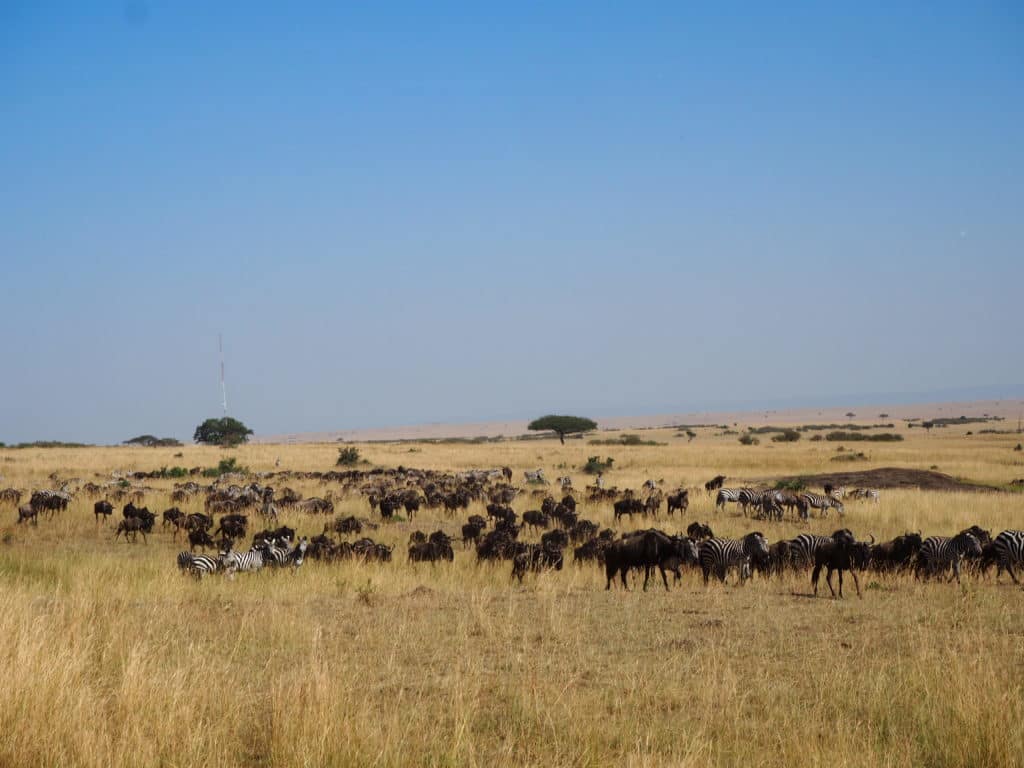
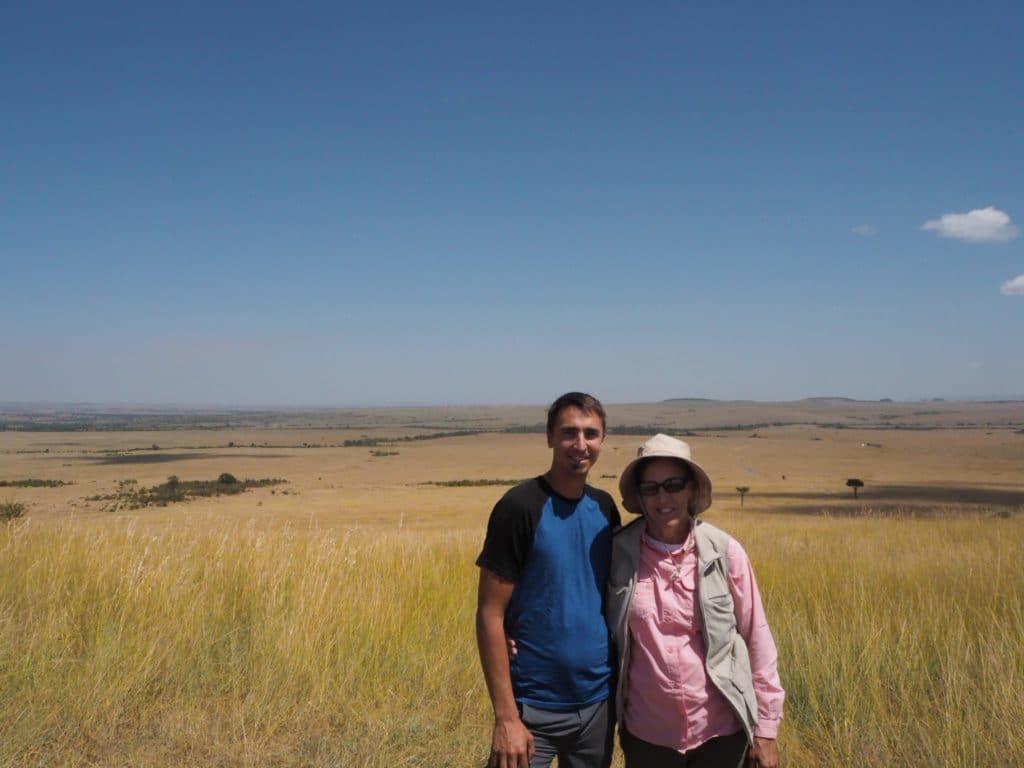
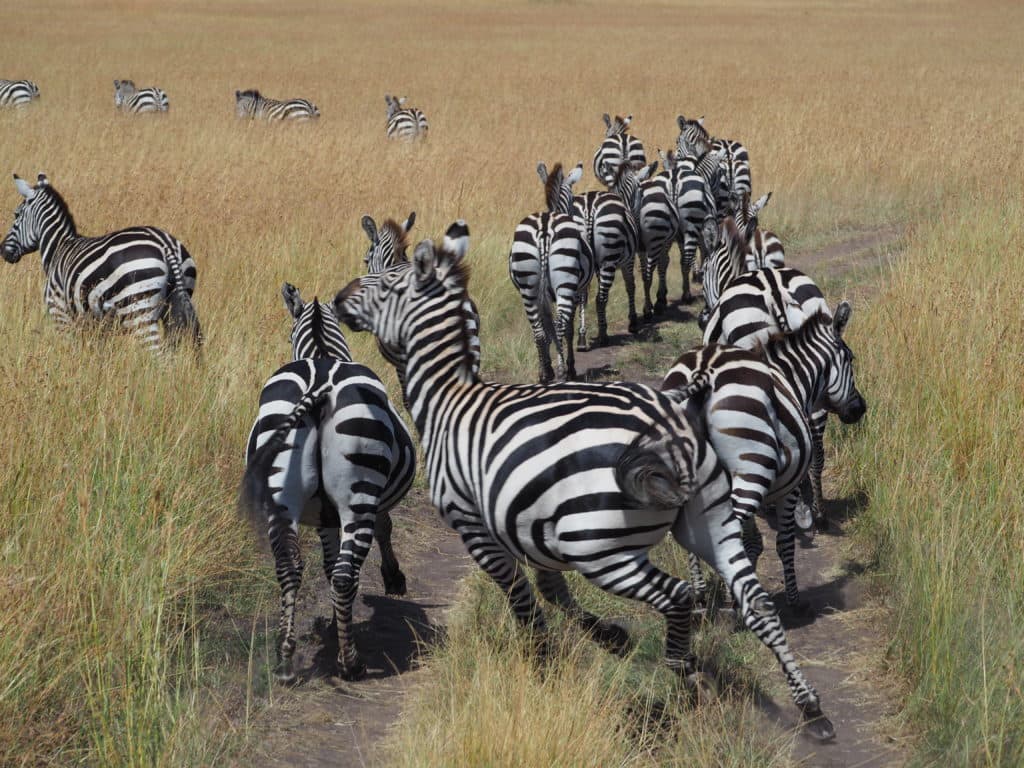
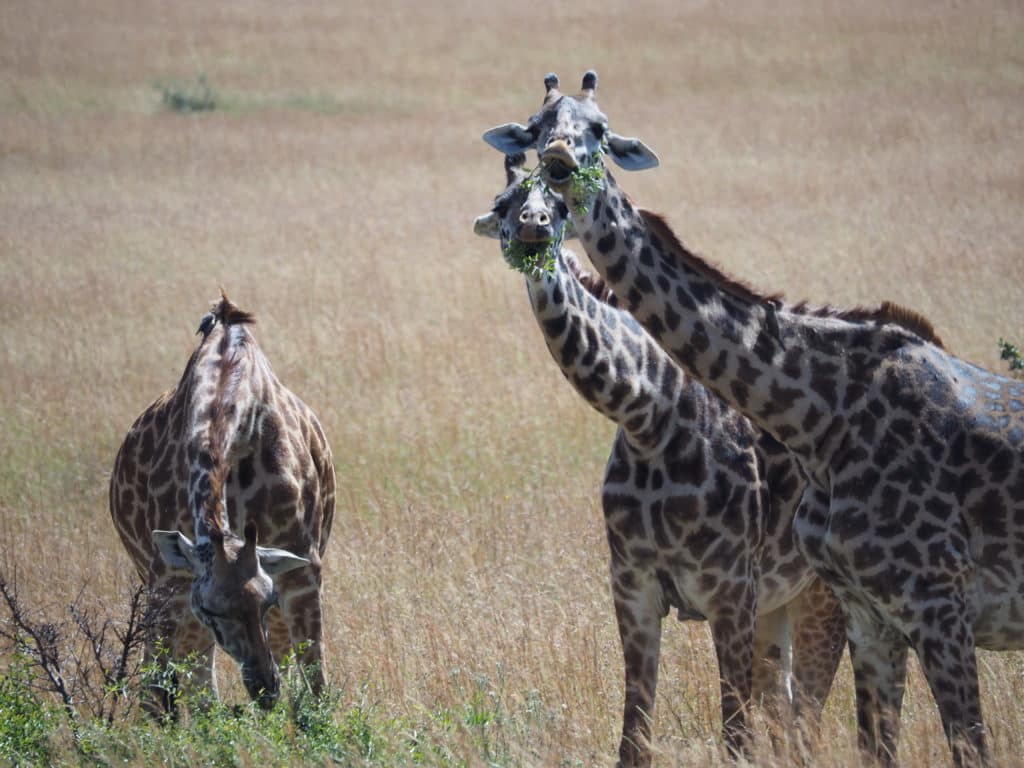
It was literally impossible to look out over the plains and not see thousands of animals. It was like this throughout the whole day as we drove around the park in our 4×4 van. On top of the large herds of grazers, we also saw several groups of lions, a few hyenas, cheetahs, ostriches, mongoose, warthogs, jackals, and hippos. Absolutely amazing.
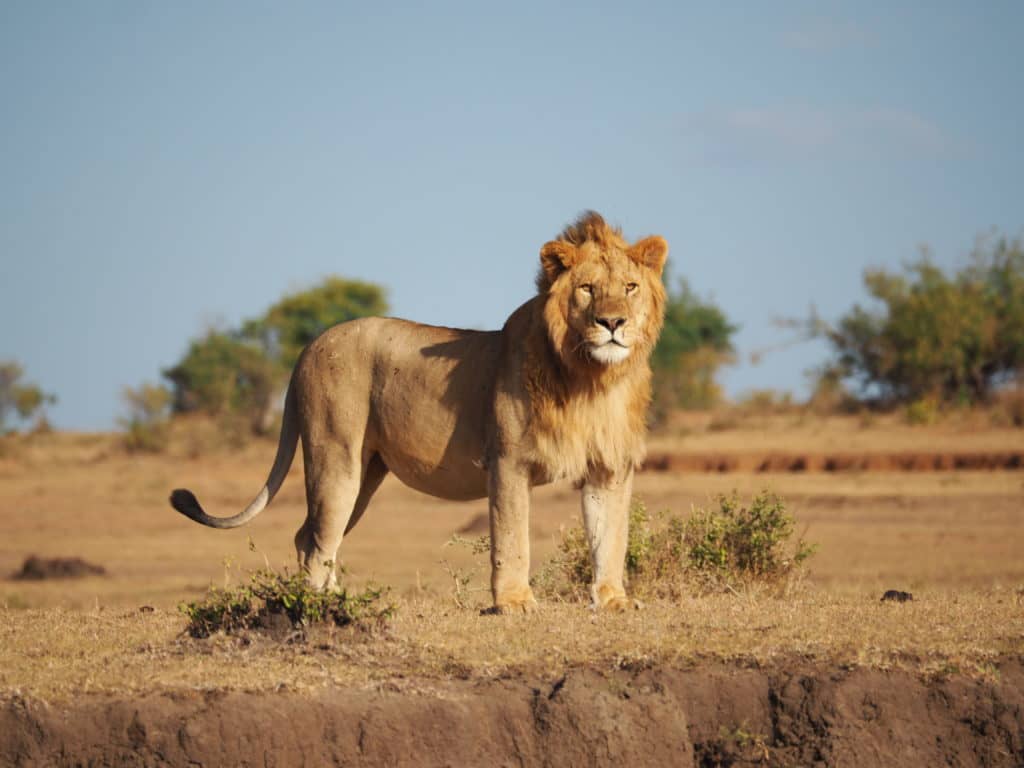
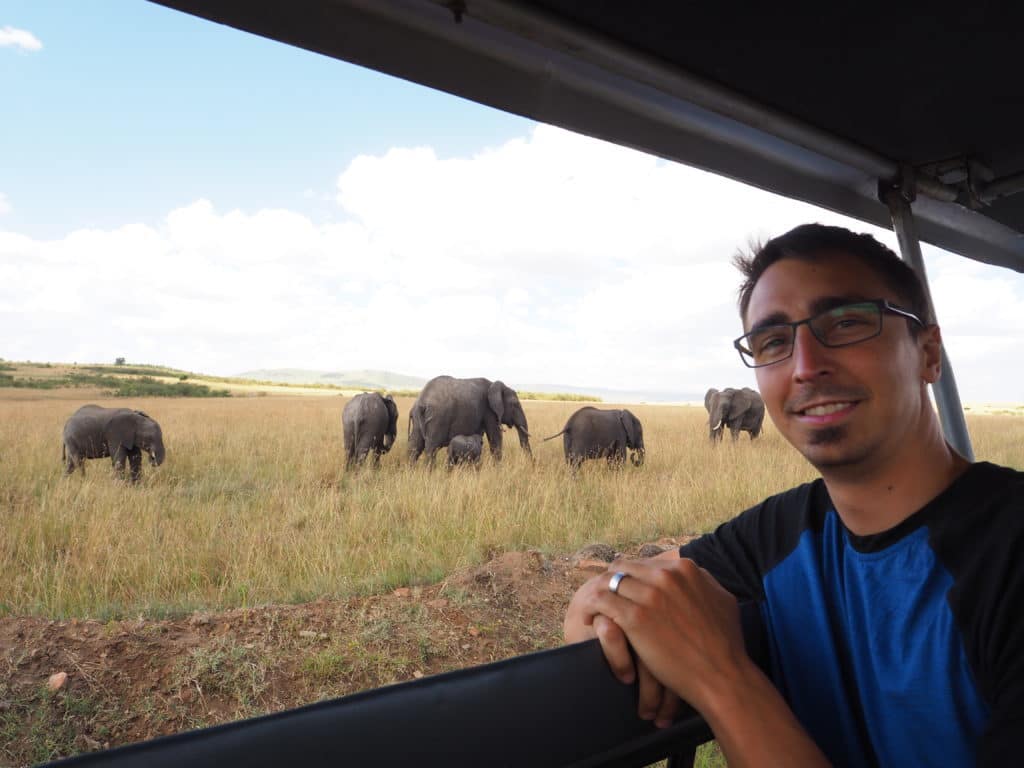
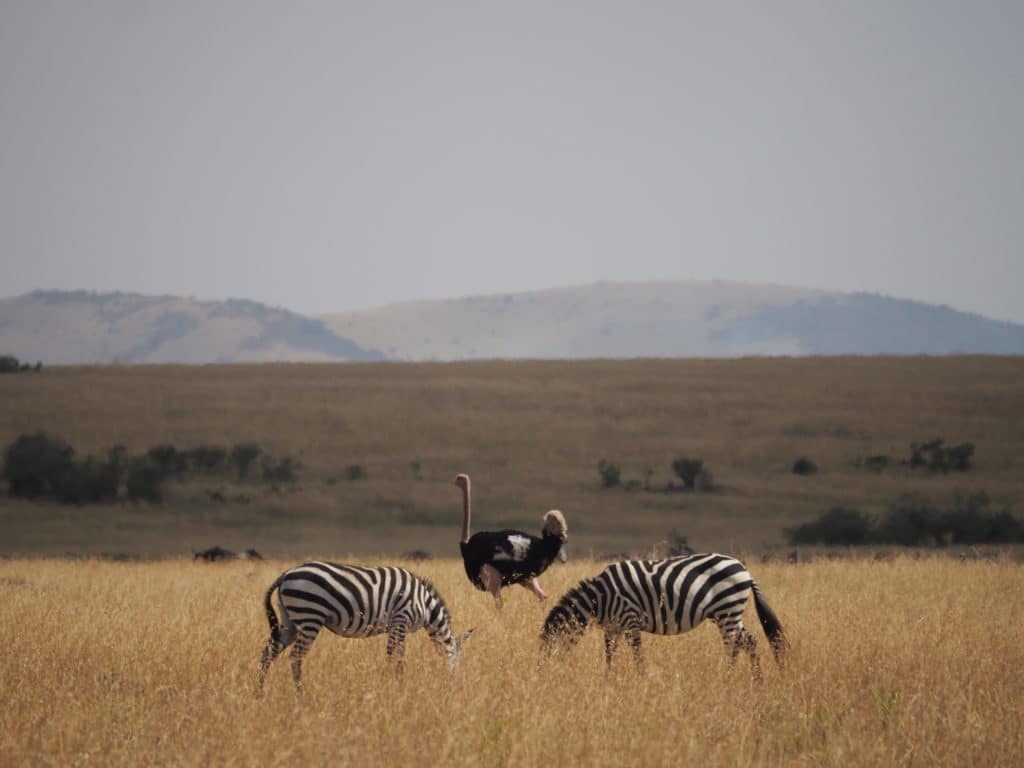
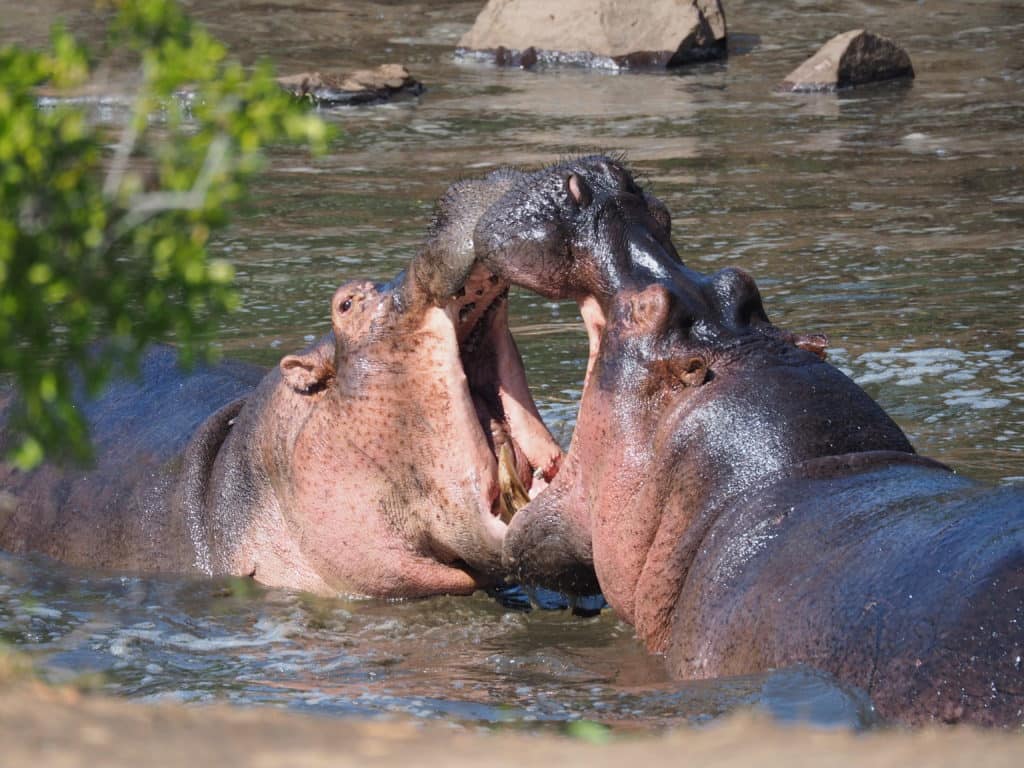
However, the highlight for us during our stay in the Masai Mara was watching two adult male cheetahs hunt wildebeest. The two male cheetahs targeted a young wildebeest, easily caught up to it during the chase, and pounced onto it. However, immediately after the cheetahs hit the young wildebeest, a few adult wildebeest spun around and ran the cheetahs off. While it would have been neat to see the cheetahs make a kill, it was still quite interesting to see the wildebeest herd come together and chase off two dangerous predators to save one of their own.

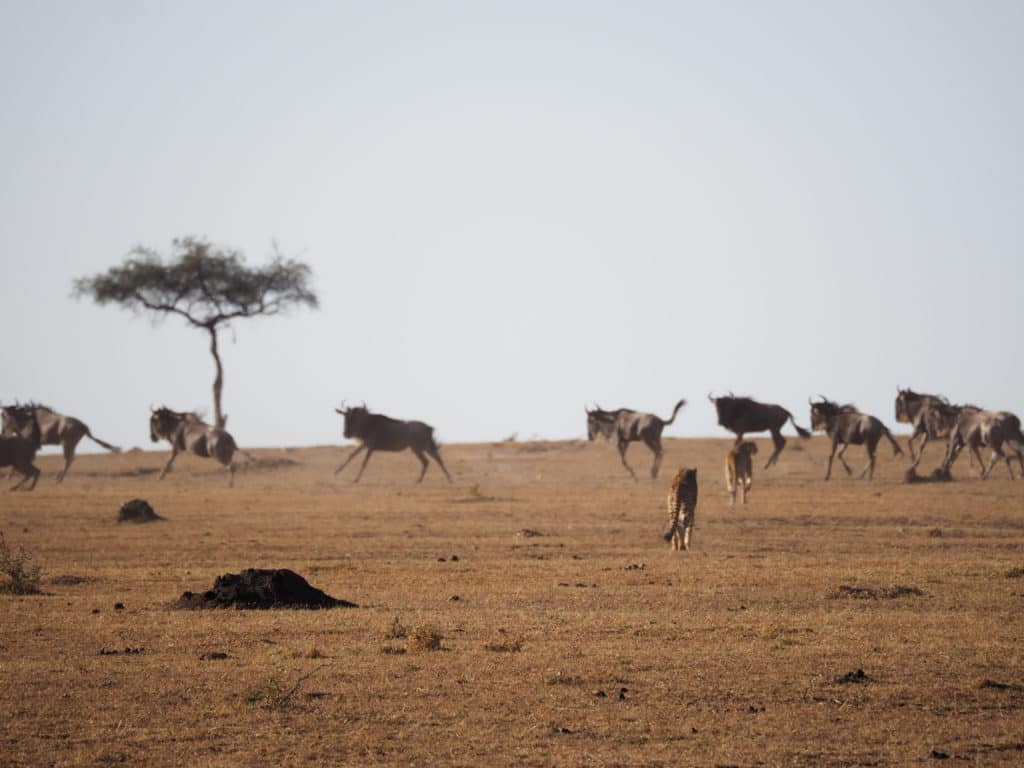
After visiting the Masai Mara we drove to the Serengeti. Even though the two parks are connected, it still took us 12 hours to get to our lodge in the Serengeti. This is because there is no border crossing between Kenya and Tanzania close to the parks (not for people anyway!). We therefore had to drive back out of the Masai Mara, around the whole reserve and to the only border crossing in the area to get to the Serengeti. This wasn’t on nicely paved roads either, it was hours and hours of travel on ridiculously rough gravel roads which nearly shook the teeth out of our heads. I have no idea how our van didn’t fall apart during the trip.
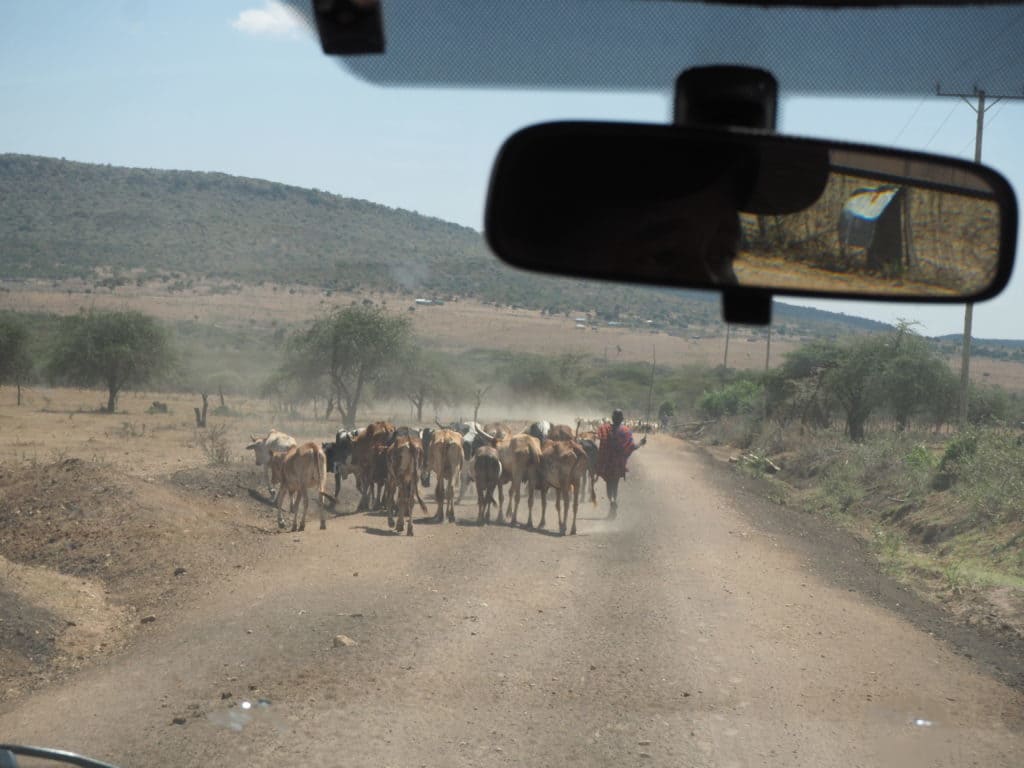
Finally we reached the Tanzanian border crossing and met our Tanzanian driver-guide named David. He would prove to be an excellent guide who answered all our questions with a smile and who knew the wildlife around us like it was his backyard. He was also a genuinely good person, who shared stories with us about his friends, family, and childhood. He was also a much more cautious driver than his Kenyan counterpart, which made our experience on the equally rough Tanzanian roads a bit less teeth shattering.
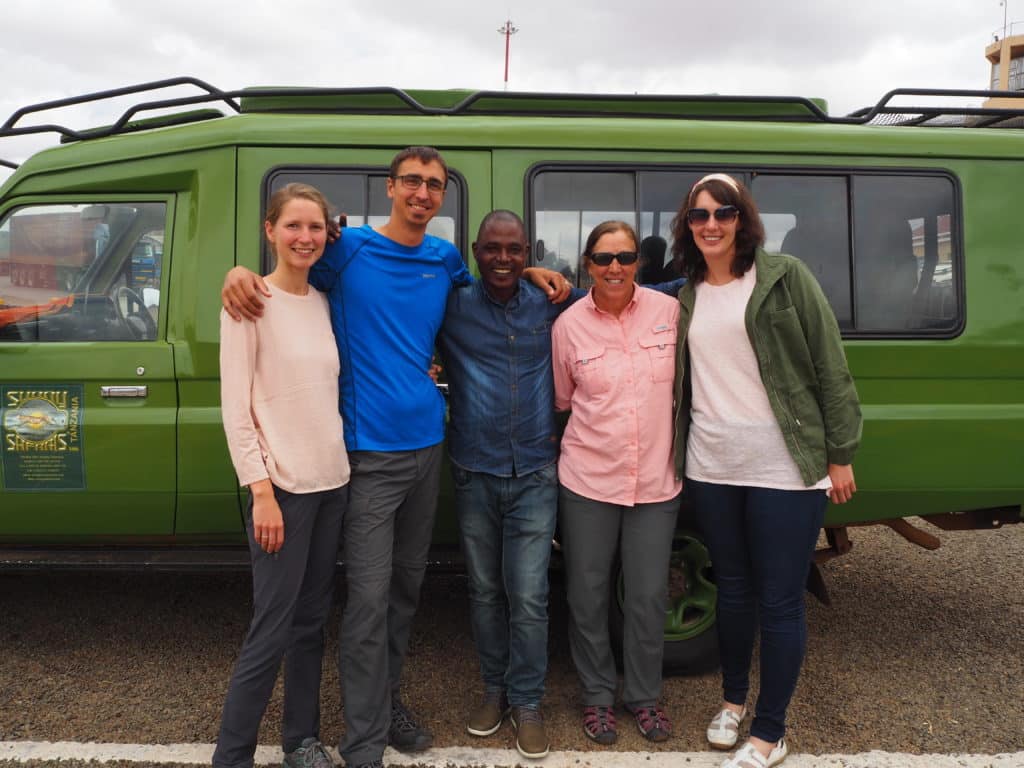
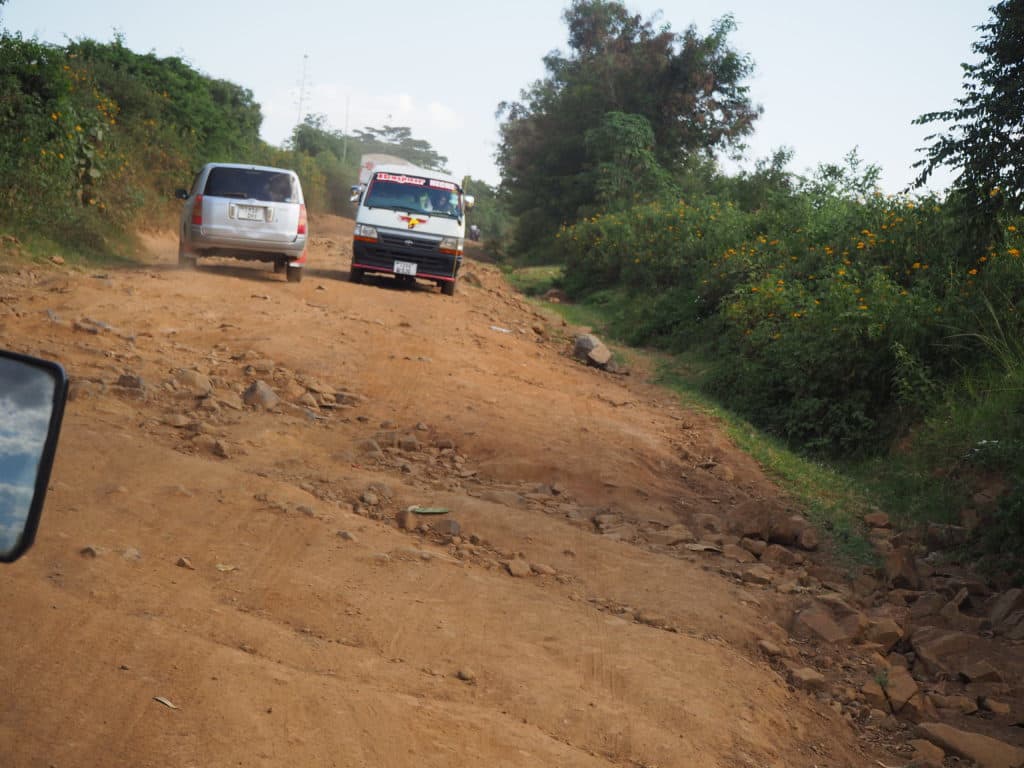
The drive was also interesting because we passed through many small villages along the way so we were able to catch a glimpse of the local life. We noticed a lot less trash along the roadsides and in the villages of Tanzania than compared to Kenya which was a welcome change. We also began to see bicycles again which were almost completely absent in Kenya oddly enough.
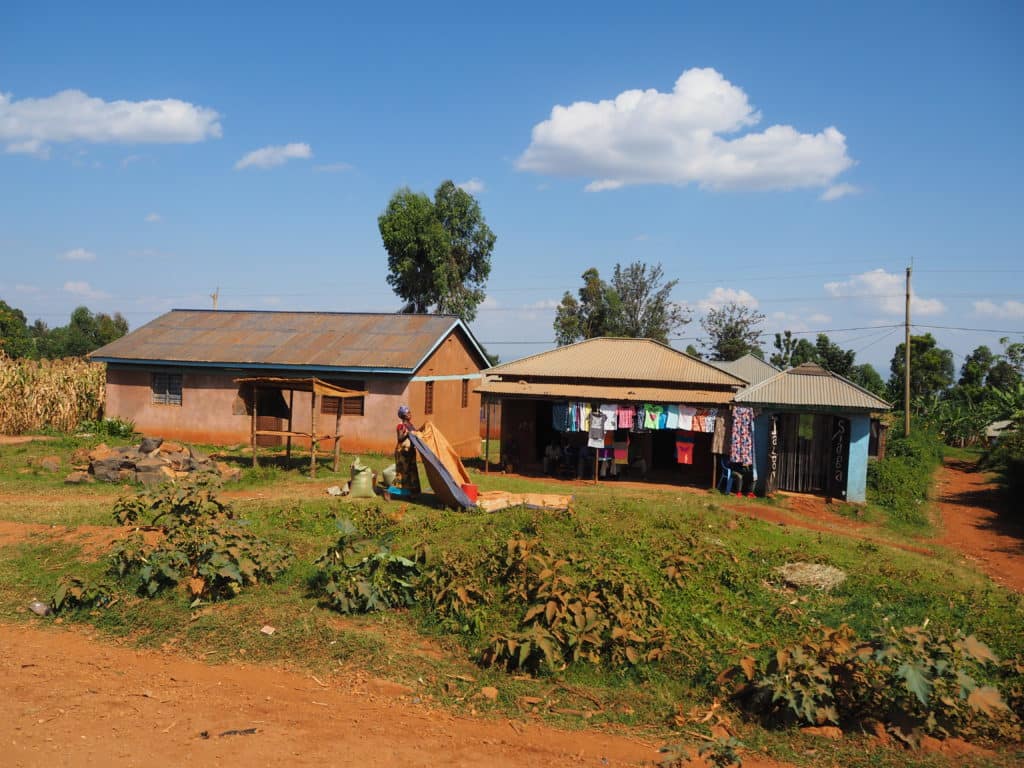

Finally, after a long day of traveling (almost 12 hours on those roads!!) we arrived at the Serengeti Heritage Tented Camp. We were greeted with warm towels to wipe off the dust from the day and then showed to our tents. Tent is hardly the word for it though because these “tents” were quite fancy! Wooden floors, toilet and shower with running water, a bit of electricity, and quite spacious. All enclosed under a very large canvas tent.
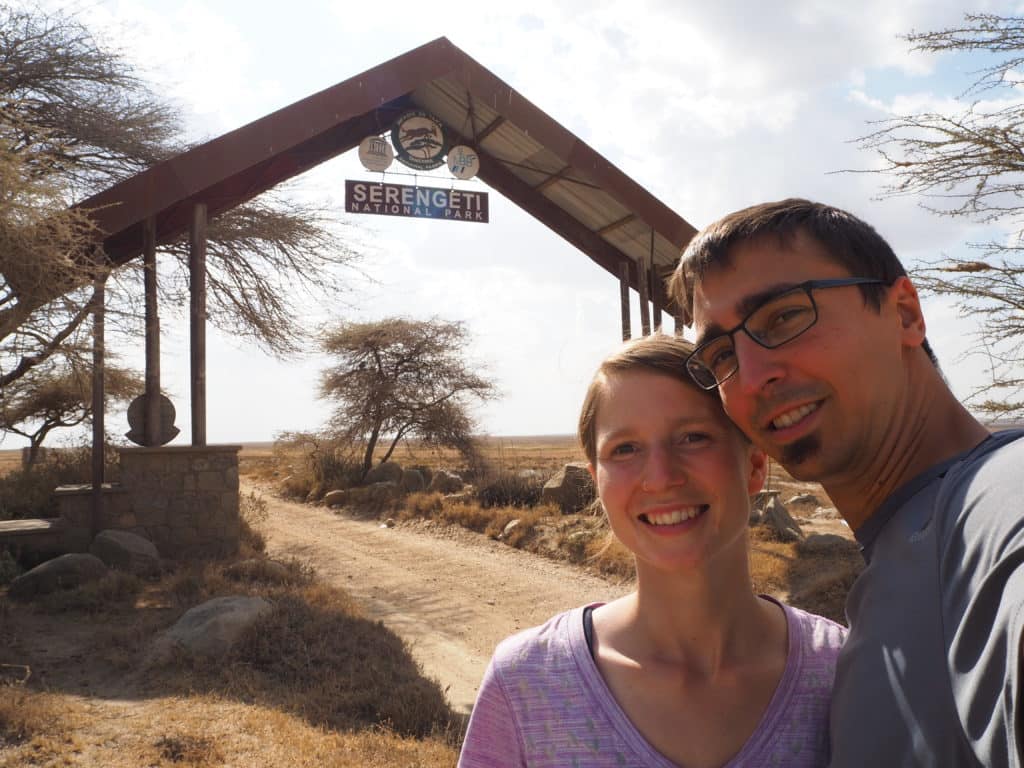
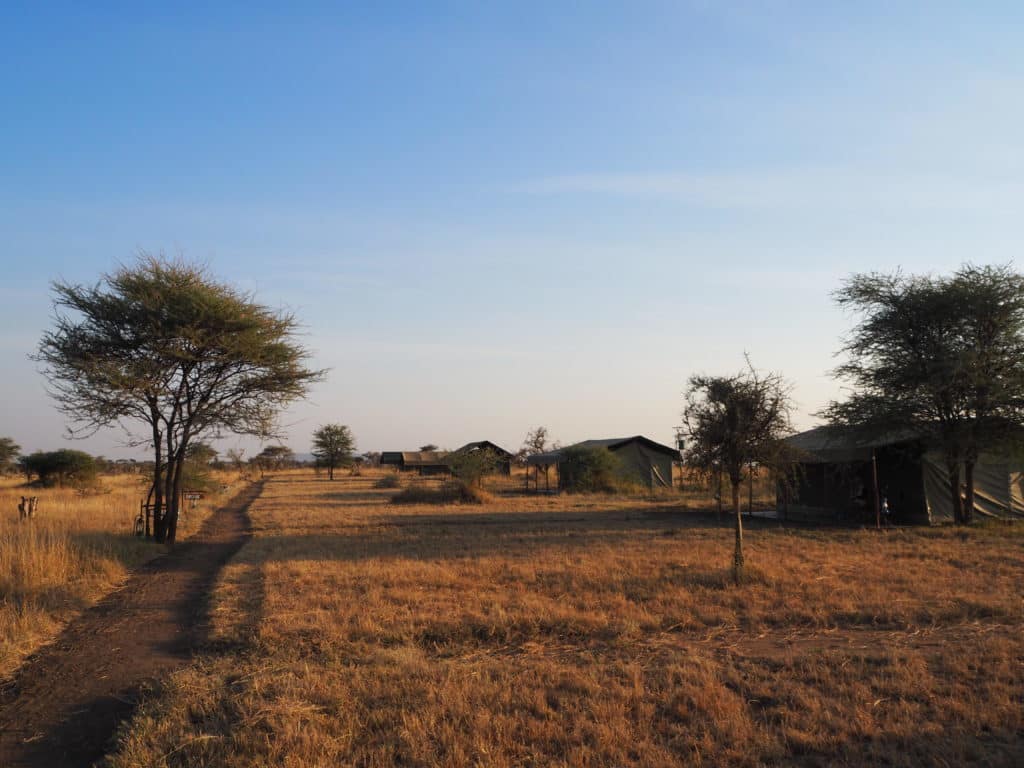
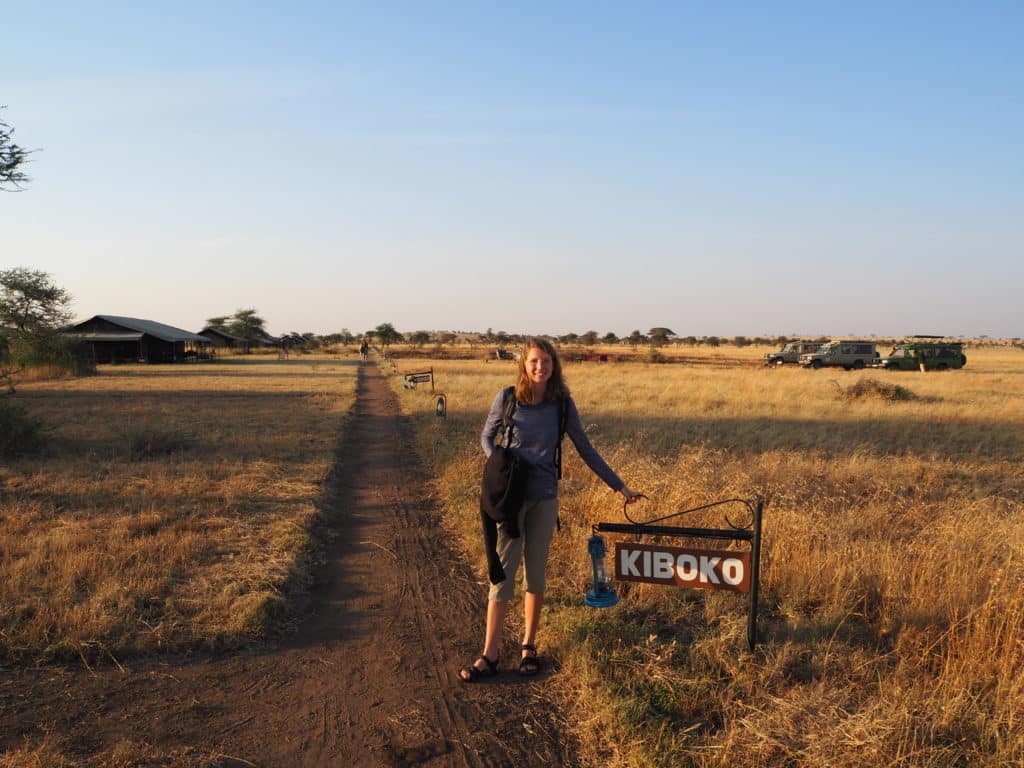
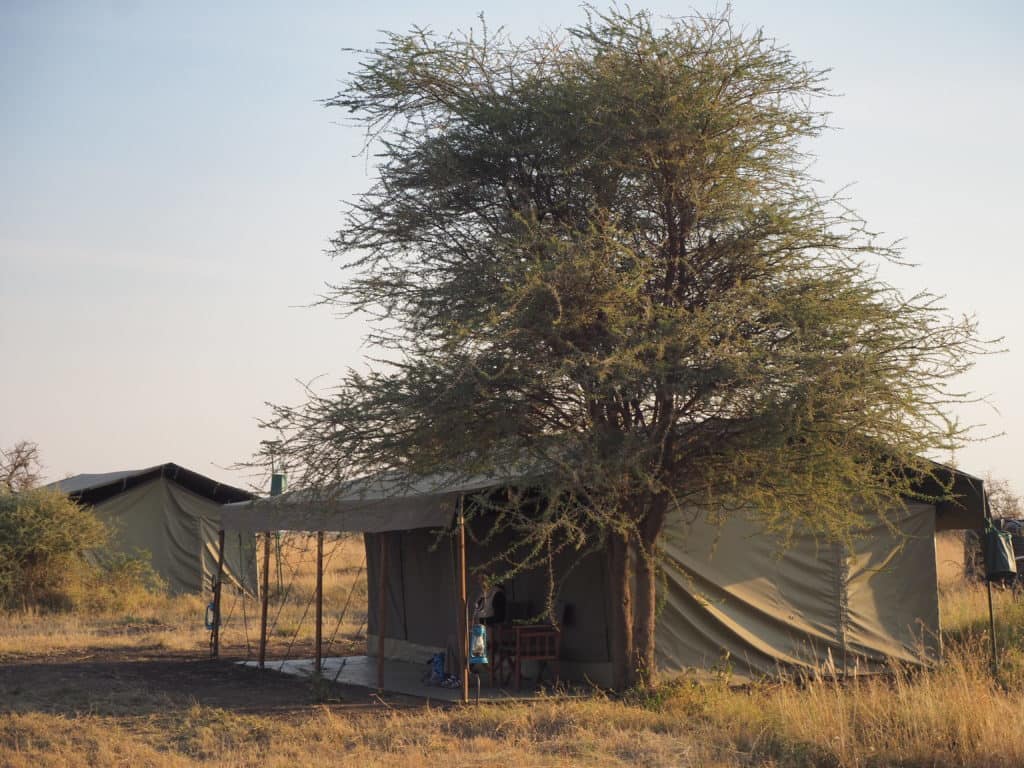
After eating a buffet dinner, we were escorted back to our tents by a Masai man working as security. Lions and hyenas are common visitors to the camp, so the camp employs Masai as security guards to protect the visitors staying with them. If you caught Kathy’s recent post about the Masai you would understand why they are such sought after security guards. I can honestly say, if I was on foot and came across lions or hyenas in the bush, I would rather have a Masai with a spear by my side than a random guy with a gun. They are incredibly brave people and lions and hyenas literally run in fear at the sight of their red cloaks. I asked our Masai escort if he was ever scared when he ran into lions at night. He said “Never! If you fear them, they will kill you.”
As we began to fall asleep that night we heard the calls of a few lone hyenas as they wandered around somewhere not far off from where we slept, and in the pre-dawn hours of the next morning I was awoken by the sounds of a lion roaring. It sounded like one large male calling to others to respect his territory. It was an eery, yet absolutely exciting experience. We felt as if we were now, finally, immersed in the world of these wild animals. So cool to hear the sounds of the Serengeti so up close and personal.
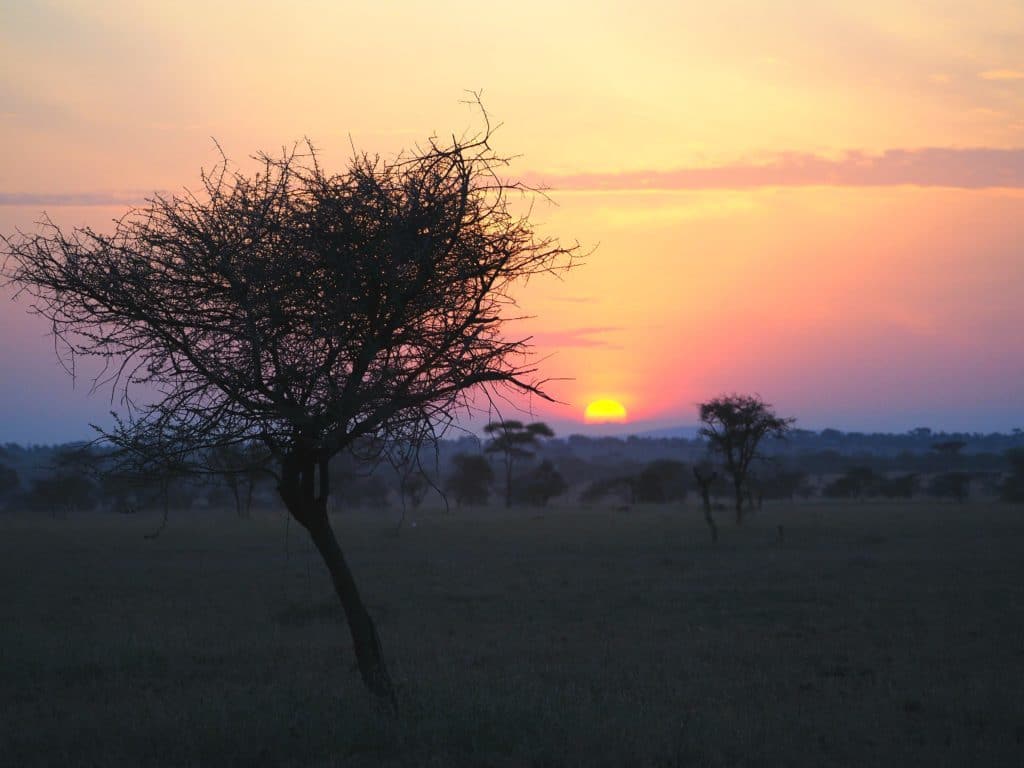
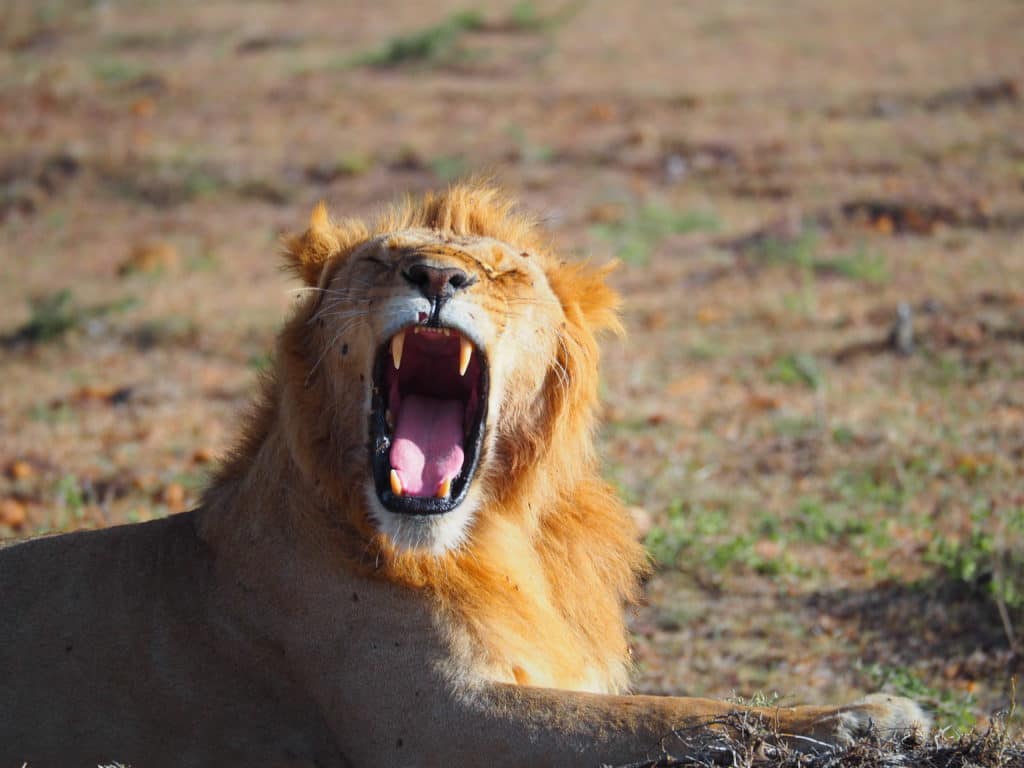
Our first full day in the Serengeti made it abundantly clear to us how this magnificent grassland got its name, for in the Masai language, Serengeti means “endless plains”. Sure enough, the grasslands extend as far as the eye can see in every direction, dotted with beautiful acacia trees and an incredible number of animals (for example, there are about 2 million wildebeest and 1/2 million zebras which take part in the world’s largest terrestrial mammal migration!) The whole serengeti ecosystem is about 30,000 km² (12,000 mi²), an incredibly large and wonderfully protected wildlife area.

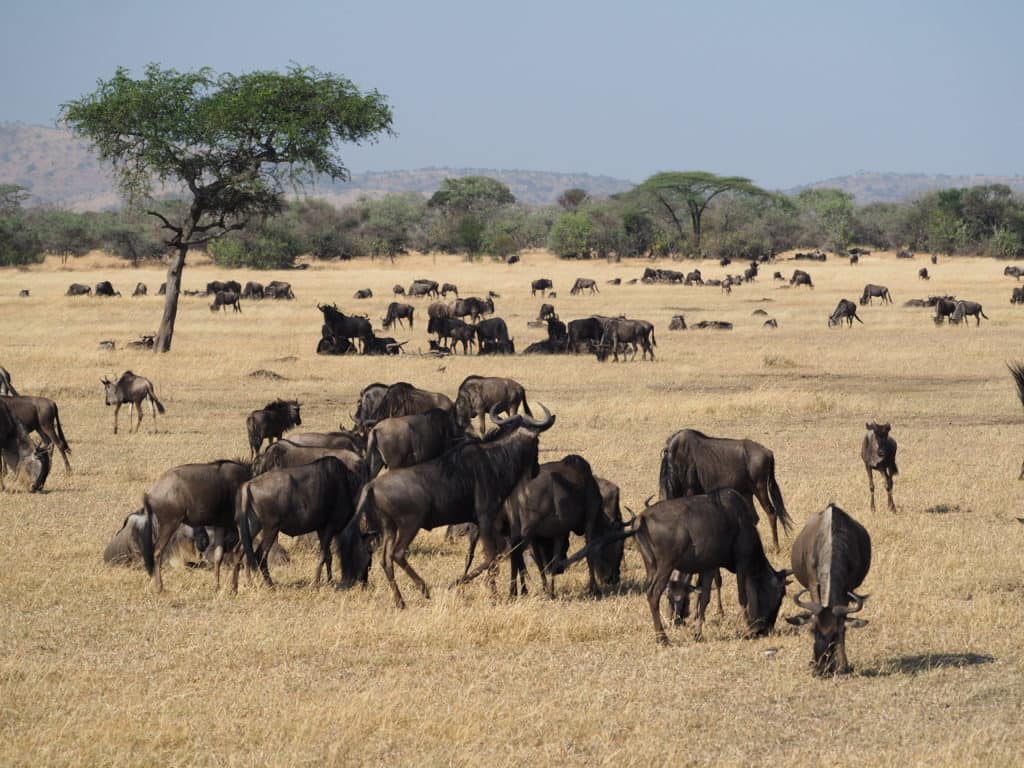
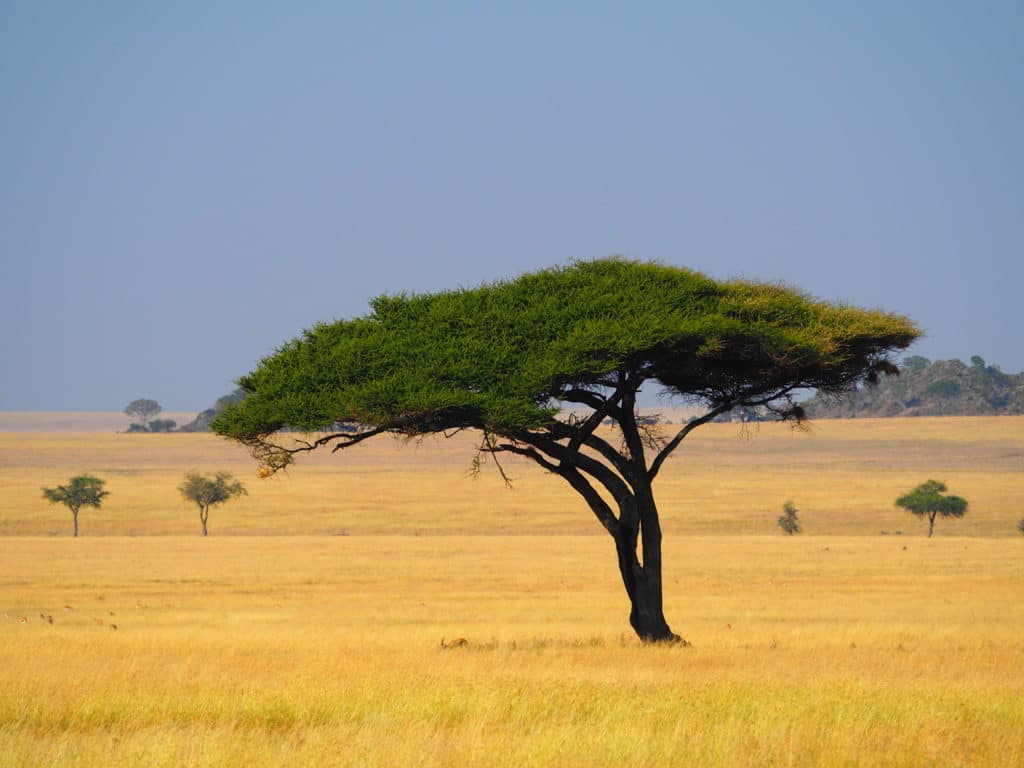
That first day we saw a pride of lions with about 5 females, 2 adult males, and 4 or 5 cubs. The females and cubs were lounging underneath a small acacia tree and the males a few meters away underneath a different tree. There wasn’t much action, yet it was still fun to observe these magnificent animals up close (they were only about 10 ft away!).
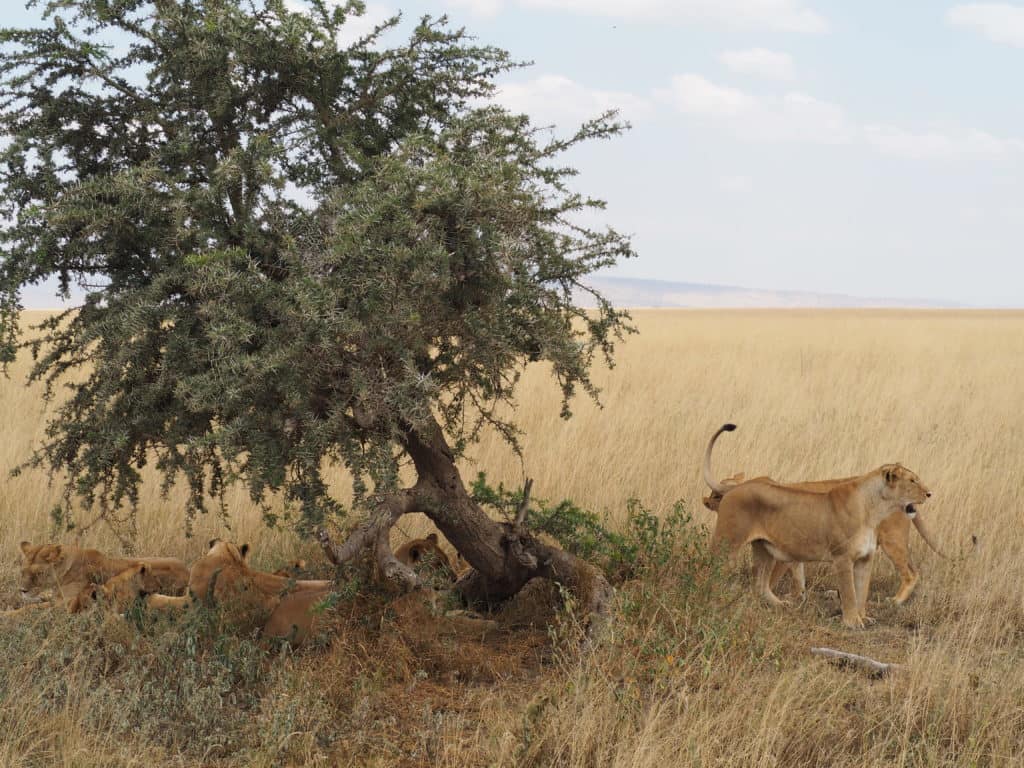
As we were watching the lions, David heard on the radio of a cheetah kill not far away so we went to check it out. We came on to the scene to see a mother cheetah and two adolescent cubs eating an impala antelope they had recently killed. After watching them for a few minutes I noticed the mother cheetah looking in the same direction for a long time. I followed her gaze and eventually noticed two female lions slowly making their way toward our location. The two lions didn’t appear in a hurry but were clearly on their way towards the kill. All of the sudden, the two lions broke into a sprint directly towards the cheetah kill and immediately the family of cheetahs scattered. The two young cubs turned into four as two additional cubs popped out of hiding spaces and sprinted off with their mother. The lions were on the kill within seconds, growling and fighting each other over the impala. The cheetah family stopped several hundred yards away and looked back, disappointed at losing such an important meal. We watched the two female lions squabble over the kill for several minutes until we moved off.
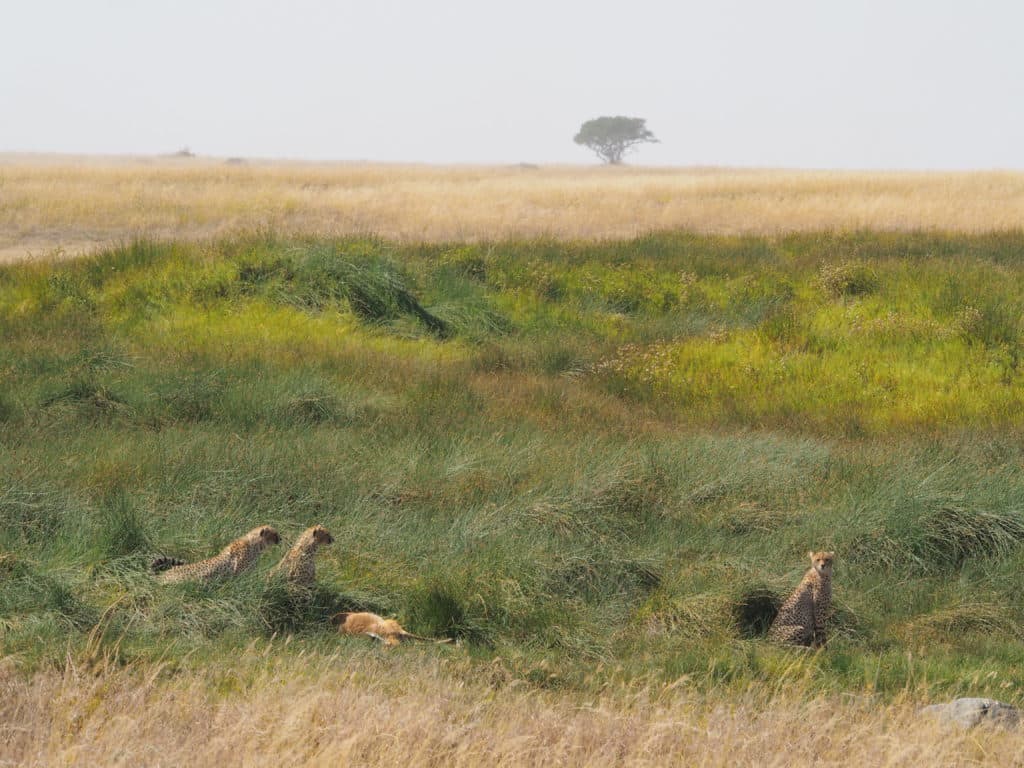
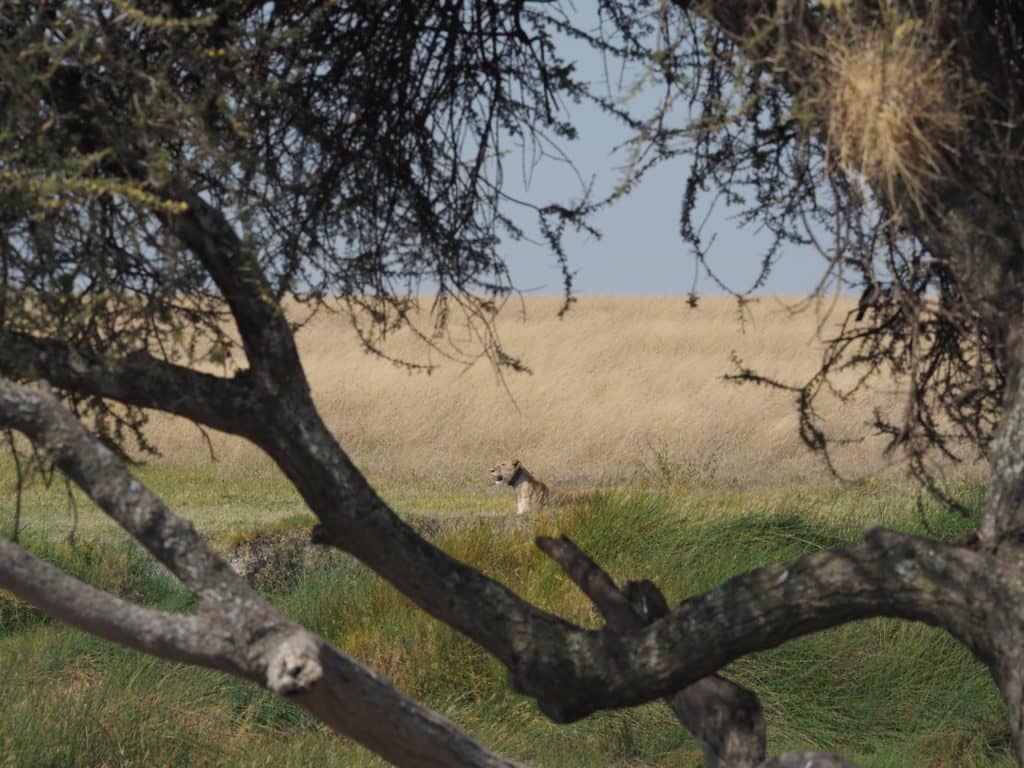
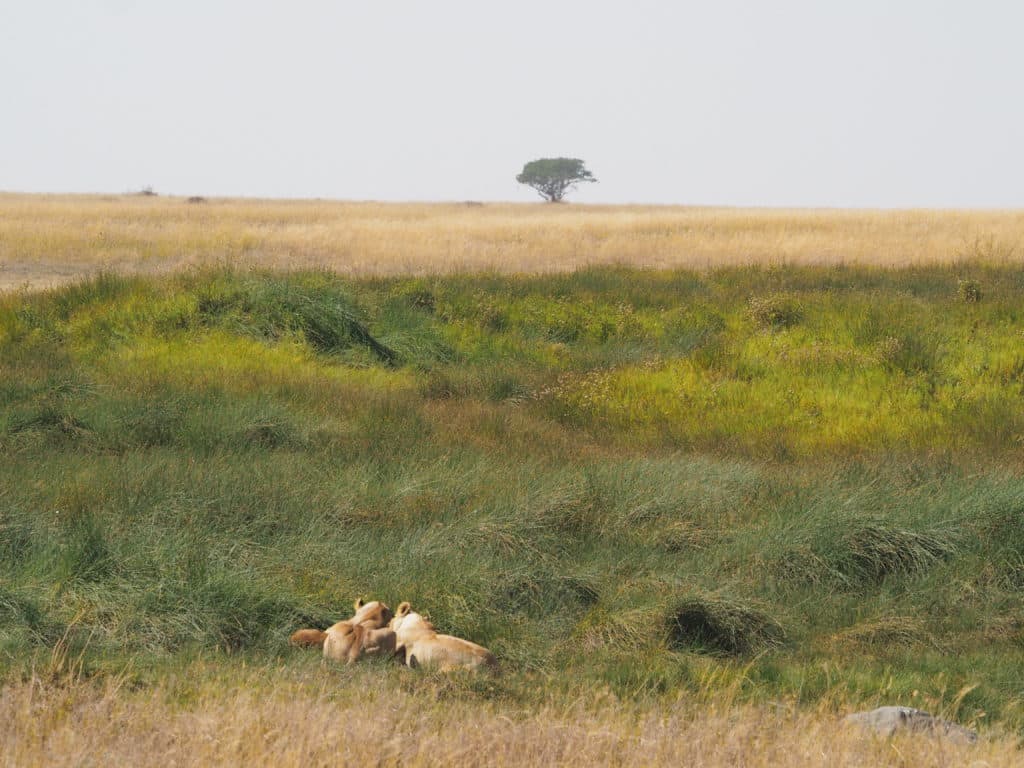
David then heard of a leopard spotting so we drove a few minutes to a large sausage tree standing alone in the grassland (sausage trees have very large, sausage like fruits that hang from them, hence the name). Sure enough, there was a large male leopard sitting in one of the lower branches. After closer inspection, we noticed a smaller female leopard sitting higher up, above the male. This pair had most likely come together to mate, but unlucky for us, they didnt put on a show, instead choosing to sleep away the daylight hours.
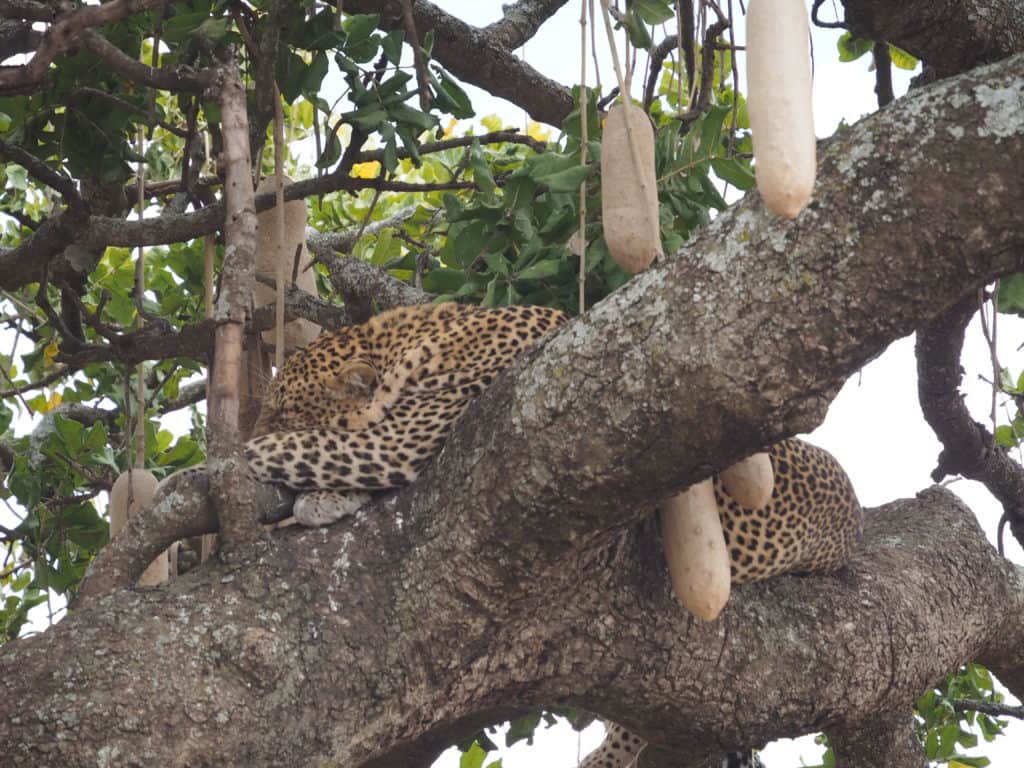
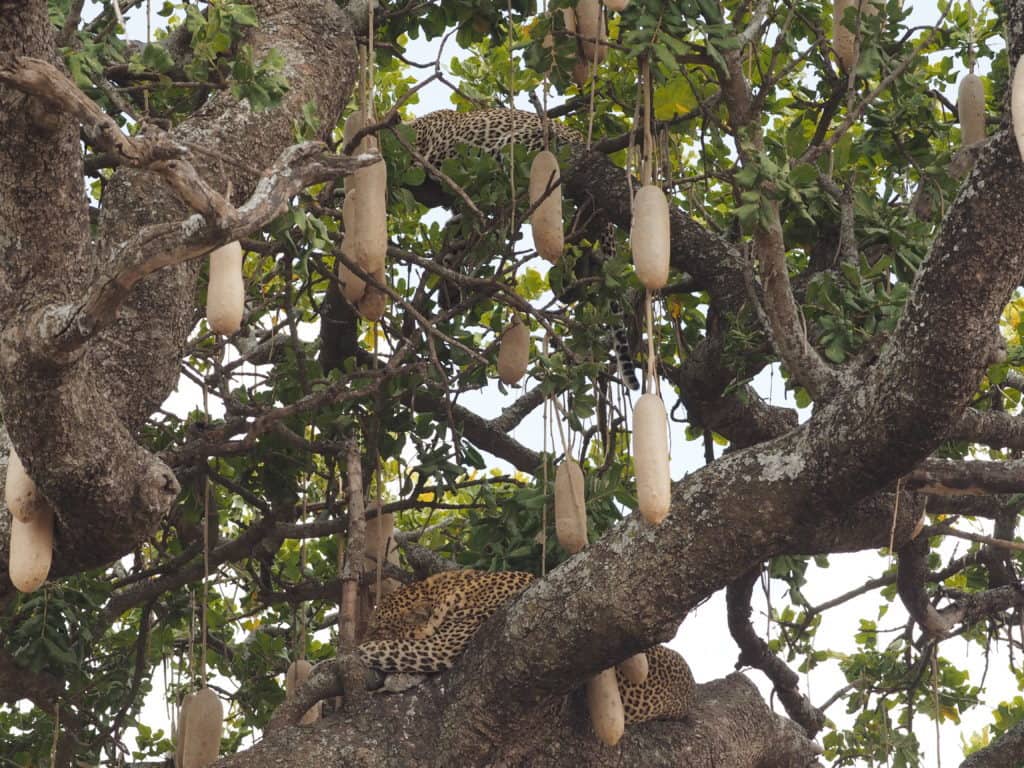
One particular highlight for me was a large female hyena that we happened upon during the afternoon. This hyena was at the remains of a zebra carcass (it was mostly bones to be more accurate) and was devouring what was left. We were so close we could smell the carcass and even hear the bones crunching under the force of the hyena’s strong jaws. The hyena would munch away for a few seconds, look up to scan the horizon for dangers, chase off the vultures trying to steal a bite, then get back down to the bone-crunching business of finishing off the zebra. I was loving it. The others? Not so much 🙂
We continued to slowly wind our way along the dirt paths of the park, past families of giraffes, herds of zebra, troups of baboons, countless gazelle, and funny warthog families, until we eventually found large herds of elephants demolishing acacia trees, literally ripping branches from the trees and tearing long strips of bark off to eat. They didn’t seem the least bit bothered by the three inch long acacia thorns either, they would simply eat them right alongside everything else. We watched one group of elephants for a little while as they ate and then continued down the path to watch another group of elephants bathing in a waterhole. It was an entire family; large female matriarch, several middle aged females, a couple of teenagers, and a cute little baby elephant who never strayed more than a couple feet from his mother. We sat and watched this family of elephants for a long time, it never got old watching them interact with each other as they rolled around in the waterhole caking themselves in mud, drinking and spraying water through their trunks, digging at the sides of waterhole with their front feet, and even rubbing their butts on a large grassy knoll a few feet from the waters edge. It was exactly the kind of scene you would see in a National Geographic video!
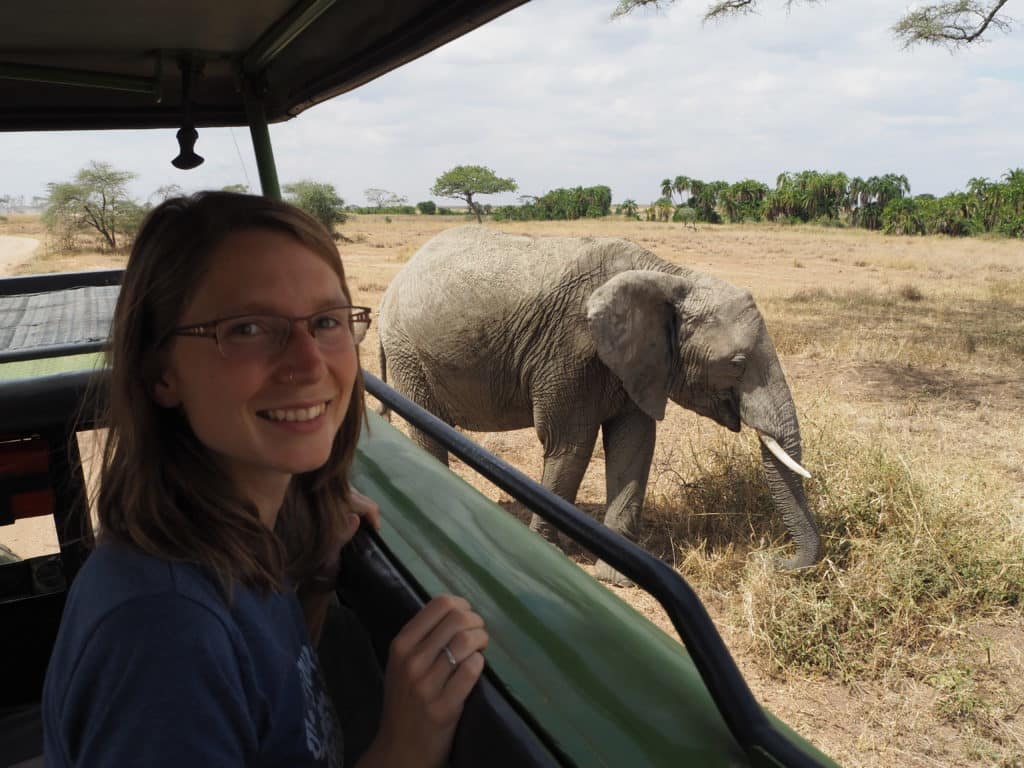
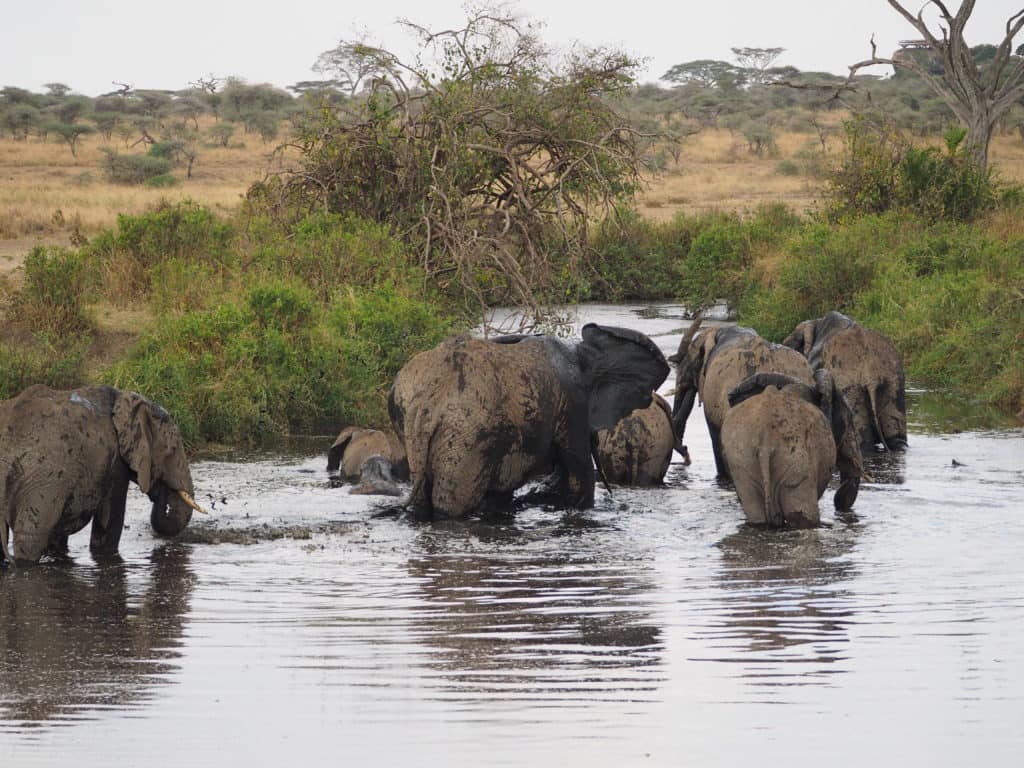
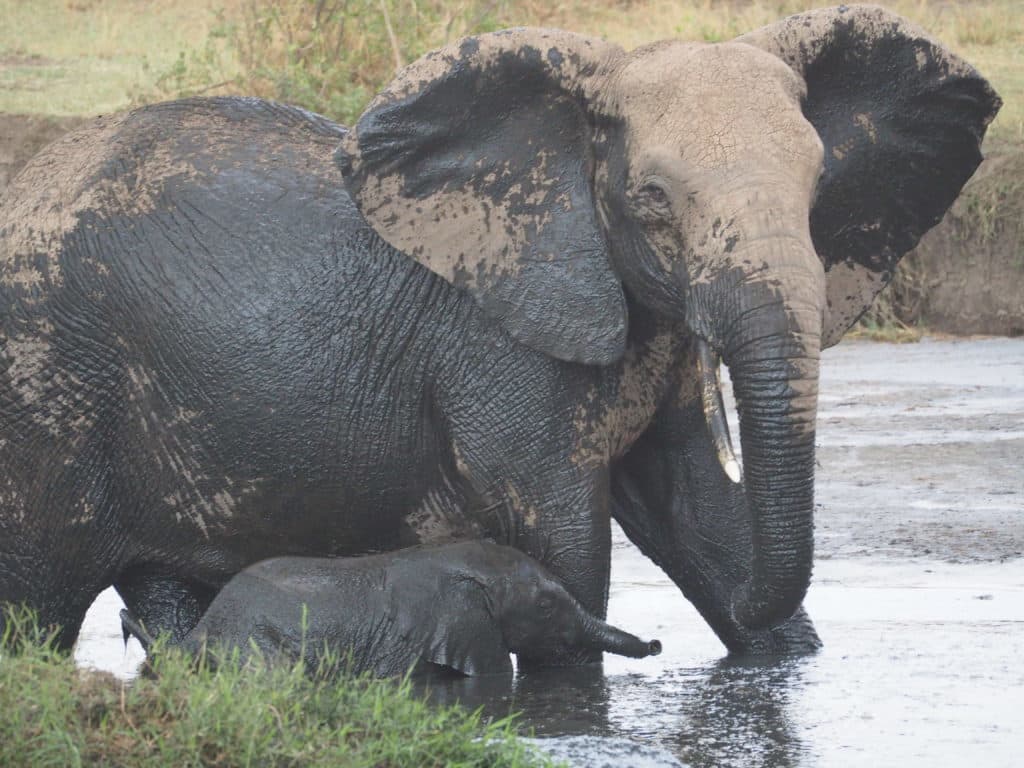
Speaking of videos, here is a short video of the highlights from our trip to the Masai Mara and Serengeti. I still can’t believe we saw all of this!
I was mesmerized by the Serengeti. I had dreamt of going to Africa to see the wildlife there ever since I was a kid. I watched countless Nat Geo videos, hours and hours of Animal Planet and Discovery Channel, completely engrossed in the wildlife of that magical place. To finally be there myself to witness the wonders of this natural paradise was something I will not forget. Making it even better was the opportunity to share the experience with Kathy, who patiently waited at every single animal encounter until I had seen enough (she enjoyed it too, she just wasn’t as into the hyena eating the zebra head as I was!). And if that wasn’t enough, I was able to experience the beauty of the Serengeti with Mom as well. Mom was the one who never hesitated to buy those Nat Geo videos she knew I loved so much, never hesitated to order the countless Wildlife Fact File cards I read and memorized as a kid, and never hesitated to sit down with me and watch discovery channel shows about wildlife even though she probably had better things to do. I am so glad that Mom decided to come and join Kathy and I on our trip, and what better place to choose than the wilds of East Africa!

And don’t worry MaryBeth, I havent forgotten about you! Thanks for being a great travel companion for Mom and taking part in this epic trip with us! We enjoyed your great sense of humor and I especially enjoyed your help in locating those “interesting” wildlife scenes!


Comments
1 CommentKaren
Jul 16, 2017Absolutely gorgeous, gorgeous photos. And I loved the video compilations! Seeing such magical places is such a testament to the community, vividness, and personality of animal life (those qualities aren’t distinct to humans!), which always leaves me in awe. I am so, so glad Mom joined for this!! Makes those NatGeo videos even more astounding and meaningful for re-watching 🙂 All those nights from our youth are why I’m still addicted to watching nature videos! Love it. What a magnificent trip and memories!